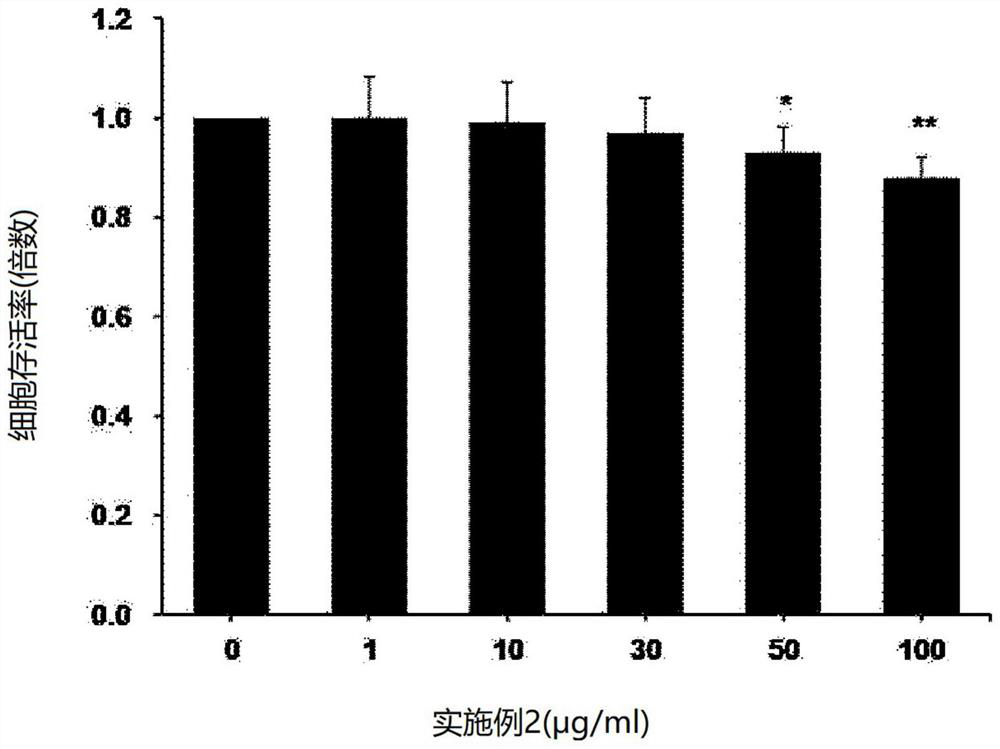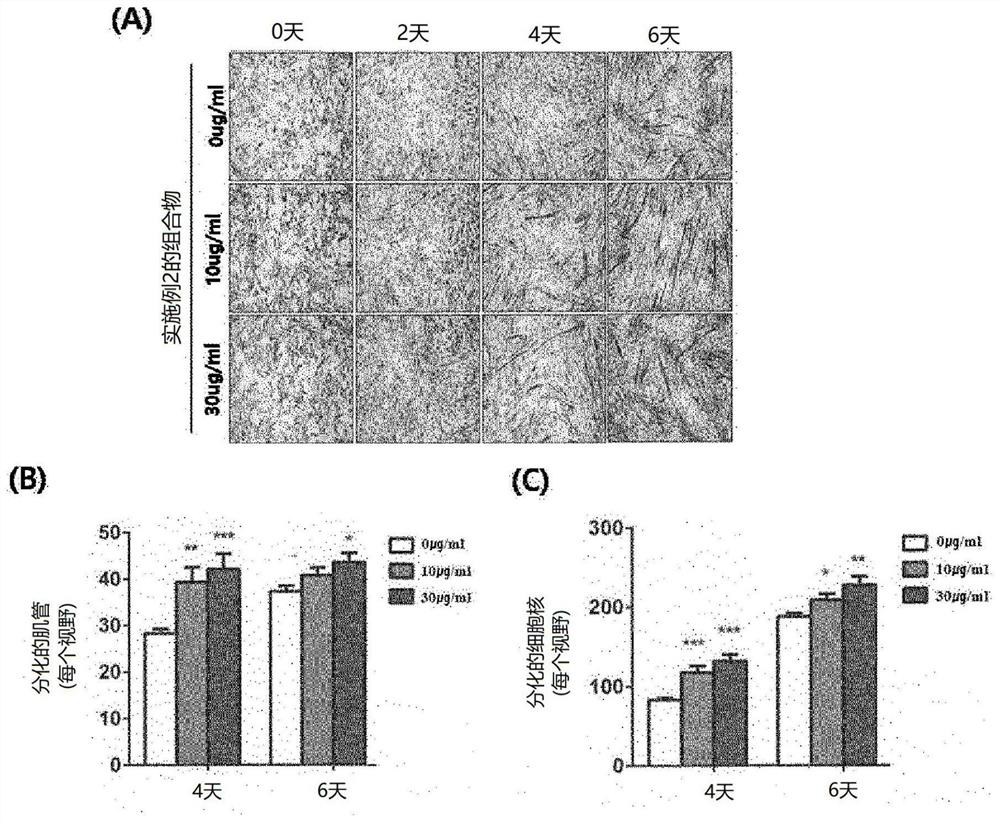Composition for promoting myogenesis, containing processed ginseng extract
A ginseng extraction and composition technology, applied in the field of compositions for promoting muscle differentiation, can solve problems such as unrecorded and implied inhibition of myostatin and the like
- Summary
- Abstract
- Description
- Claims
- Application Information
AI Technical Summary
Problems solved by technology
Method used
Image
Examples
Embodiment 1
[0094]
[0095] 250 g of ginseng powder and 750 g of wheat bran were added, and sterilized with an autoclave at 121° C. and 1.5 atmospheres. Add 2L of sterile water to the sterilized medium and mix, then inoculate the Aspergillus niger suspension (5×10 5 spore / medium weight g), and cultured at 28°C for 7 days. After the cultivation was completed, 0.02M sodium acetate buffer solution was added and mixed, and the medium was then filtered. The filtered culture solution was filtered and concentrated using an ultrafiltration membrane (above 100 kDa) to obtain 60 g of enzyme solution. 30 g of the enzyme solution was added to 200 g of the ginseng powder of Comparative Example 1, and after culturing at 28° C. for 18 hours, ethanol was added to precipitate the enzyme, and the supernatant was concentrated. After adding 2 L of purified water to 200 g of the above concentrate, 250 g of citric acid was added, and stirred at 50° C. for 18 hours. After the reaction was completed, 70% et...
Embodiment 2
[0096]
[0097] 250 g of ginseng powder and 750 g of wheat bran were added, and sterilized with an autoclave at 121° C. and 1.5 atmospheres. Add 2L of sterile water to the sterilized medium and mix, then inoculate the Aspergillus niger suspension (5×10 5 spore / medium weight g), and cultured at 28°C for 7 days. After the cultivation was completed, 0.02M sodium acetate buffer solution was added and mixed, and the medium was then filtered. The filtered culture solution was filtered and concentrated using an ultrafiltration membrane (above 100 kDa) to obtain 60 g of enzyme solution. 30 g of the enzyme solution was added to 200 g of the ginseng concentrate of Comparative Example 2, and after culturing at 28° C. for 18 hours, ethanol was added to precipitate the enzyme, and the supernatant was concentrated. After adding 2 L of purified water to 200 g of the above concentrate, 250 g of citric acid was added, and stirred at 50° C. for 18 hours. After the reaction was completed, 7...
Embodiment 3
[0098]
[0099] 250 g of ginseng powder and 750 g of wheat bran were added, and sterilized with an autoclave at 121° C. and 1.5 atmospheres. Add 2L of sterile water to the sterilized medium and mix, then inoculate the Aspergillus niger suspension (5×10 5 spore / medium weight g), and cultured at 28°C for 7 days. After the cultivation was completed, 0.02M sodium acetate buffer solution was added and mixed, and the medium was then filtered. The filtered culture solution was filtered and concentrated using an ultrafiltration membrane (above 100 kDa) to obtain 60 g of enzyme solution. 30 g of the enzyme solution was added to 200 g of the ginseng concentrate powder of Comparative Example 3, and after culturing at 28° C. for 18 hours, ethanol was added to precipitate the enzyme, and the supernatant was concentrated. After adding 2 L of purified water to 200 g of the above concentrate, 250 g of acetic acid was added, and stirred at 50° C. for 8 hours. After the reaction was comple...
PUM
 Login to View More
Login to View More Abstract
Description
Claims
Application Information
 Login to View More
Login to View More - R&D
- Intellectual Property
- Life Sciences
- Materials
- Tech Scout
- Unparalleled Data Quality
- Higher Quality Content
- 60% Fewer Hallucinations
Browse by: Latest US Patents, China's latest patents, Technical Efficacy Thesaurus, Application Domain, Technology Topic, Popular Technical Reports.
© 2025 PatSnap. All rights reserved.Legal|Privacy policy|Modern Slavery Act Transparency Statement|Sitemap|About US| Contact US: help@patsnap.com



